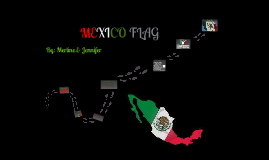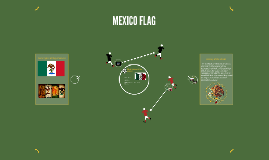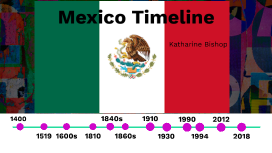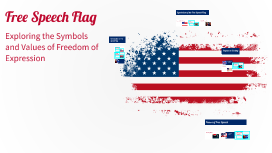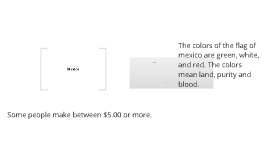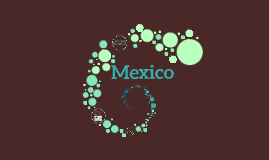Mexico Template
Transcript: Mexico Timeline Katharine Bishop 1840s 1910 1400 2012 1990 2018 1930 1994 1400s Native Groups The Aztecs dominated over northern Mexico who dominated during the Spanish conquest. The Olmecs were Mexico's first known native group. Native groups are important to history (in this case Mexican history) because they hold a unique language, knowledge systems, and beliefs. The Mayans are another native group that have been believed to have been around for more than 7,000 years. 1519 1518 Spanish Conquest of the Aztec Empire Through two years, Hernan Cortes, the leader of the group and a small group of men brought down the Aztec empire in Mexico. This conquest laid the foundation for colonial regiments that would eventually transform the Americas. The Americas were also a part of this in that they were conquered by the spanish empire. 1600s Spain conquers the rest of Mexico and Spanish settlers arrive Cortés destroyed Tenochtitlan, building his own capital over its ruins, and proclaimed the Aztec Empire to be New Spain. This is important to Mexican history because Mexico got more land and it opened up trade and got profits from it. 1810 Mexican War of Independance In the early 19th century, Napoleon's occupation of Spain led to the outbreak of revolts all across Spanish America. Miguel Hidalgo y Costilla launched the Mexican rebellion with his “Cry of Dolores,” and his populist army came close to capturing the Mexican capital. This is significant to Mexican history because Mexico conceived a unique identity during this war. 1846 Mexican American War The effect this war had on Mexico and its history is that Mexico accepted the Rio Grande as its boundary. The treaty that was signed also gave the United States Mexico's northern provinces of California and New Mexico. The Mexican-American War was a conflict between the United States and Mexico, fought from April 1846 to February 1848. It started from the annexation of the Republic of Texas by the U.S. 1860s The Second French Intervention This event impacted Mexican history by allowing active political reaction against the liberal policies of social and socio-economic reform by the president. The Second French Intervention in Mexico, also known as the Second Franco-Mexican War, was an invasion of Mexico by the Second French Empire, which lasted from 1862-1867. They aimed to establish a regime in Mexico favorable to French interests. 1910-1920 Mexican Revolution The Mexican Revolution, which began in 1910, ended dictatorship in Mexico and established a constitutional republic. The Mexican Revolution is called "the defining event of modern Mexican history." The Mexican Economic Miricale In the long run, this mircale didn't create a strong foundation for Mexico throughout the years due to many Mexicans not being able to afford the sophisticated products the country would need to manufacture in order to keep growing under the ISI model. This was a great increase of their GDP in the government. The miracle was that when everyone was poor the stocks and everything went up that's why it is called the economic miracle. War Against Drugs Mexico is being effected by this because the cartels and the drug trade fuel rampant violence in Mexico, contributing to the country’s tens of thousands of homicides every year. The Mexican drug war, starting in 2006, is the Mexican theater of the global war on drugs, as led by the U.S. federal government, that has resulted in an ongoing asymmetric low-intensity conflict between the Mexican government and various drug trafficking syndicates. North American Free Trade Agreement This boosted Mexican farm exports to the United States, which have tripled since the pact's implementation. Hundreds of thousands of auto manufacturing jobs have also been created in the country, and most studies have found that the agreement increased productivity and lowered consumer prices in Mexico. An agreement signed by the governments of Canada, Mexico, and the United States, creating a trade block in North America. The agreement came into force on January 1, 1994. Economic Collapse and Rise of External Debt In 2022, the economy should grow 3.3%. Last year it grew 5.9%. The economy is growing. In 2012, the economy crashed and everyone, even the wealthy, lost their money. Mexico Elections The lastest presidential election was in 2018 and was won by Andrés Manuel López Obrador. Presidents get elected to Mexico every 6 years, while legislatures get elected every 3 years. Current legislatures: Yvette Herrell, Teresa Leger Fernandez, Melanie Stansbury






